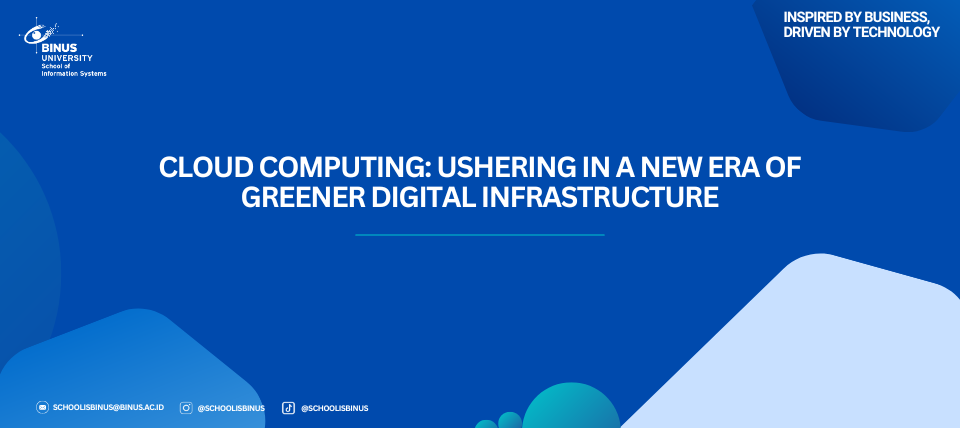Cloud Computing: Ushering in a New Era of Greener Digital Infrastructure

Cloud computing has revolutionized the way businesses and individuals access, store, and process data. Its scalability, cost-effectiveness, and accessibility have made it a cornerstone of modern digital infrastructure. Beyond these benefits, cloud computing is also playing a critical role in fostering a more sustainable future by reducing the environmental impact of traditional IT infrastructure. As organizations increasingly migrate to the cloud, they are not only enhancing their efficiency but also contributing to a greener planet.
One significant example of cloud computing’s environmental benefits is its ability to consolidate data centers. Traditional on-premises data centers often operate inefficiently, with servers running below capacity and consuming excessive energy. Companies like Microsoft have implemented green data centers as part of their Azure cloud platform. These facilities use advanced cooling technologies, AI for energy optimization, and renewable energy sources. In 2021, Microsoft reported achieving a 100% renewable energy usage milestone for its data centers in the United States, reducing carbon emissions significantly.
The financial sector has also embraced cloud computing to reduce its environmental footprint. HSBC, one of the largest global banks, transitioned its operations to Google Cloud, enabling it to scale resources on demand and cut down on energy usage. By migrating critical workloads to the cloud, HSBC reduced its on-premises data center energy consumption by 35%, aligning with its broader sustainability goals. This shift exemplifies how cloud computing can support large enterprises in achieving operational efficiency while meeting sustainability targets.
In the e-commerce industry, cloud computing is helping companies manage massive volumes of data while minimizing environmental impact. Amazon Web Services (AWS) powers businesses like Netflix, Spotify, and Airbnb, offering shared infrastructure that reduces the need for individual companies to operate their own data centers. AWS has committed to running on 100% renewable energy by 2025 and has already implemented measures to lower its carbon intensity. The shared model of cloud computing allows multiple businesses to benefit from the same infrastructure, driving greater resource efficiency and energy savings.
Cloud computing also plays a pivotal role in advancing smart city initiatives, which aim to create sustainable urban environments. In Singapore, the government has leveraged cloud solutions to develop a digital twin of the city, enabling authorities to optimize energy usage, reduce waste, and improve transportation systems. By processing vast amounts of data in the cloud, Singapore’s smart city infrastructure reduces the need for energy-intensive on-site computing, showcasing how cloud computing can drive sustainability at a city-wide scale.
However, cloud computing is not without its challenges. The growing demand for cloud services increases the need for large-scale data centers, which still consume significant energy and resources. To address this, tech giants like Google and Amazon are investing in innovations such as carbon capture technology and energy-efficient hardware. Moreover, smaller organizations must navigate the cost and complexity of transitioning to the cloud while ensuring compliance with sustainability goals.
Looking ahead, the integration of cloud computing with emerging technologies like artificial intelligence (AI) and edge computing will further enhance its sustainability impact. AI can optimize cloud resource allocation, reducing energy waste, while edge computing minimizes data transfer distances, saving bandwidth and power. These advancements will enable cloud computing to support industries in achieving both digital transformation and environmental sustainability.
In conclusion, cloud computing is paving the way for a more sustainable digital infrastructure. By reducing the reliance on inefficient on-premises systems, consolidating resources, and leveraging renewable energy, cloud platforms are fostering a greener future. While challenges remain, ongoing innovation and commitment from industry leaders ensure that cloud computing will continue to drive both technological and environmental progress.
References :
https://www.hivenet.com/post/the-future-of-cloud-computing-trends-and-the-pivotal-role-of-distributed-cloud

